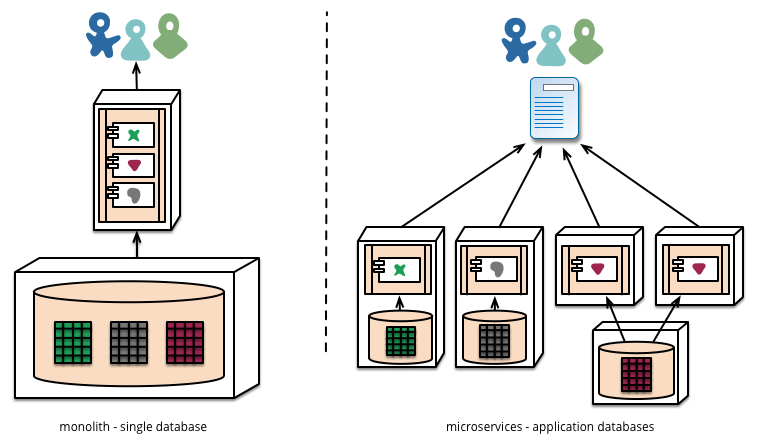Microservices in General
Microservices represent the decomposition of monolithic business systems into independently deployable services that do “one thing well.”
That one thing usually represents a business capability, or the smallest, “atomic” unit of service that delivers business value.

Microservices Architecture Benefits
Microservice architectures enable speed, safety, and scale in several ways:
As we decouple the business domain into independently deployable bounded contexts of capabilities, we also decouple the associated change cycles. As long as the changes are restricted to a single bounded context, and the service continues to fulfill its existing contracts, those changes can be made and deployed independent of any coordination with the rest of the business. The result is enablement of more frequent and rapid deployments, allowing for a continuous flow of value.
Development can be accelerated by scaling the development organization itself. It’s very difficult to build software faster by adding more people due to the overhead of communication and coordination. Fred Brooks taught us years ago that adding more people to a late software project makes it later. However, rather than placing all of the developers in a single sandbox, we can create parallel work streams by building more sandboxes through bounded contexts.
The new developers that we add to each sandbox can ramp up and become productive more rapidly due to the reduced cognitive load of learning the business domain and the existing code, and building relationships within a smaller team.
Adoption of new technology can be accelerated. Large monolithic application architectures are typically associated with long-term commitments to technical stacks. These commitments exist to mitigate the risk of adopting new technology by simply not doing it. Technology adoption mistakes are more expensive in a monolithic architecture, as those mistakes can pollute the entire enterprise architecture. If we adopt new technology within the scope of a single monolith, we isolate and minimze the risk in much the same way that we isolate and minimize the risk of runtime failure.
Microservices offer independent, efficient scaling of services. Monolithic architectures can scale, but require us to scale all components, not simply those that are under heavy load. Microservices can be scaled if and only if their associated load requires it.